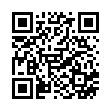
Click here to return to the main page
DOI: 10.6084/m9.figshare.4956764
The word ‘universal’ is used differently in computing, as in ‘universal Turing machine’, and in linguistics, as in ‘Universal Grammar’. But: Could it be that both ‘universals’ are nevertheless the same?
This paper is a continuation of Sintax Evolution, and it is founded on the same two bases:
Computing is a point of view that defines decidability and Turing completeness, and that distinguishes program from data and hardware from software. These concepts are needed to explain the cognitive gap between our species, Homo sapiens, and all others: we are the first and only species that achieved Turing completeness. Being Turing complete means that we can do by software whatever hardware does, so we can imagine anything that evolution could build, thus speeding up problem solving enormously. Turing completeness needs a complete language in which programs are treated as data, and any complete language has to fulfill two requirements:
This way we reach our thesis: Universal Grammar is Turing complete. Or, in other words, the human brain circuitry that implements language is Turing complete.
Our thesis that Universal Grammar is Turing complete implies that there are not unlearnable languages. This, together with the fact that natural languages are neither one nor any, demands a distinction between
where all natural languages are first languages, and our native language is not accessible. Two consequences follow:
Computing is a problem solving point of view from which language is a tool to translate problems to the hardware that resolves them. Two consequences follow:
Universal Grammar evolved as a compromise that took into account its various functions and its implementation. Universal Grammar functions include, at least, language, mathematics, and problem solving, and its implementation had to resolve its interaction with other brain modules while still satisfying other engineering conditions.
Language is the most distinctive feature of humans, but there is no consensus on what is characteristic of language. From the point of view of computing, we argue that 'the human brain circuitry that implements language is Turing complete'. This thesis makes evolutionary sense, and natural languages are expressive enough, but two issues against it remain: natural language syntax is decidable, and not every possible language can be a natural language. We answer the first showing that the syntax of a complete language can be decidable, and blaming functional semantics for the undecidability, where functional semantics is the semantics of syntax. To answer the second we distinguish native language, first language, and later languages, where all natural languages are first languages acquired during a critical period that eases the process by preventing some possibilities. The thesis supports the weak version of the linguistic relativity hypothesis, and explains the role played by language in the cognitive gap that separates our species from the rest.
This is the theory I am proposing here for your consideration. The theory is firmly founded on two bases: firstly, that the best point of view to explain syntax and language is computing, which is the essence of Chomsky (1959), and secondly, that from the point of view of computing, we humans are Turing complete, which is the essence of Turing (1936). Then there are some assumptions that you will have to assess, but they are very few, and the only important thesis is that Universal Grammar is Turing complete.
Link to my paper on the thesis that "the human brain circuitry that implements language is Turing complete", in figshare, with its pdf file.
The papers cited in this web page are:
Versions:
Última actualización: 2023-09-19.
© Ramón Casares 2019-2023